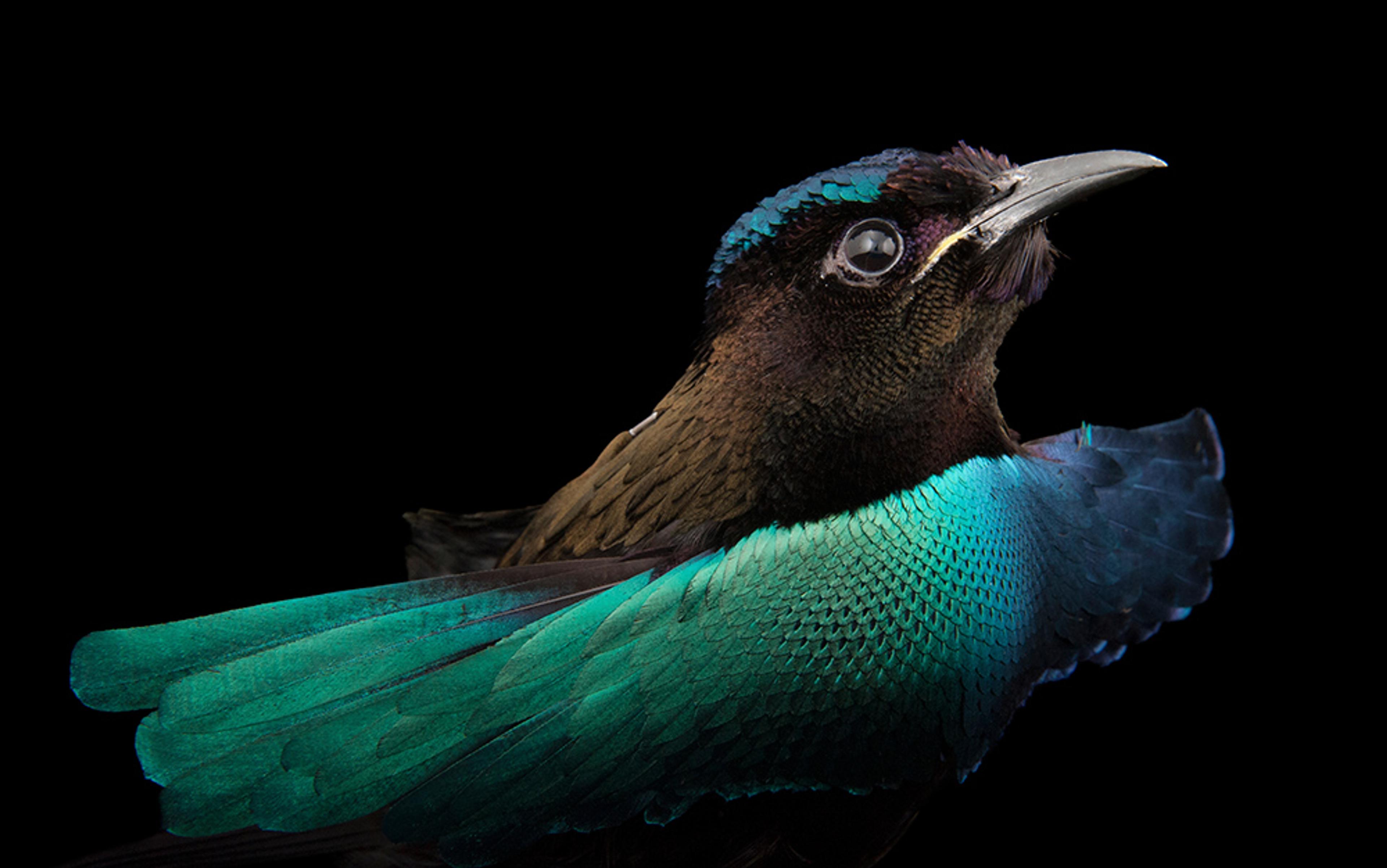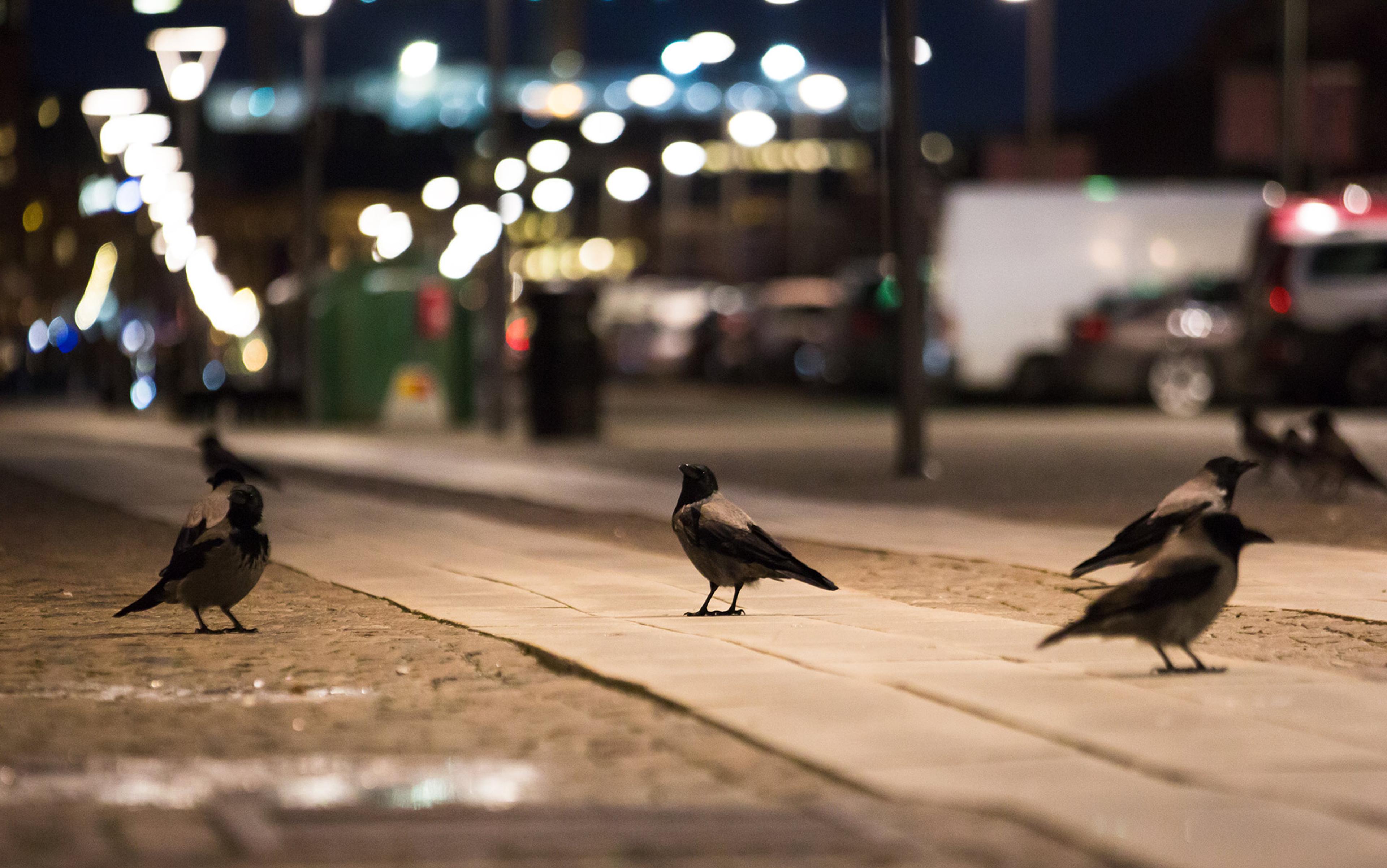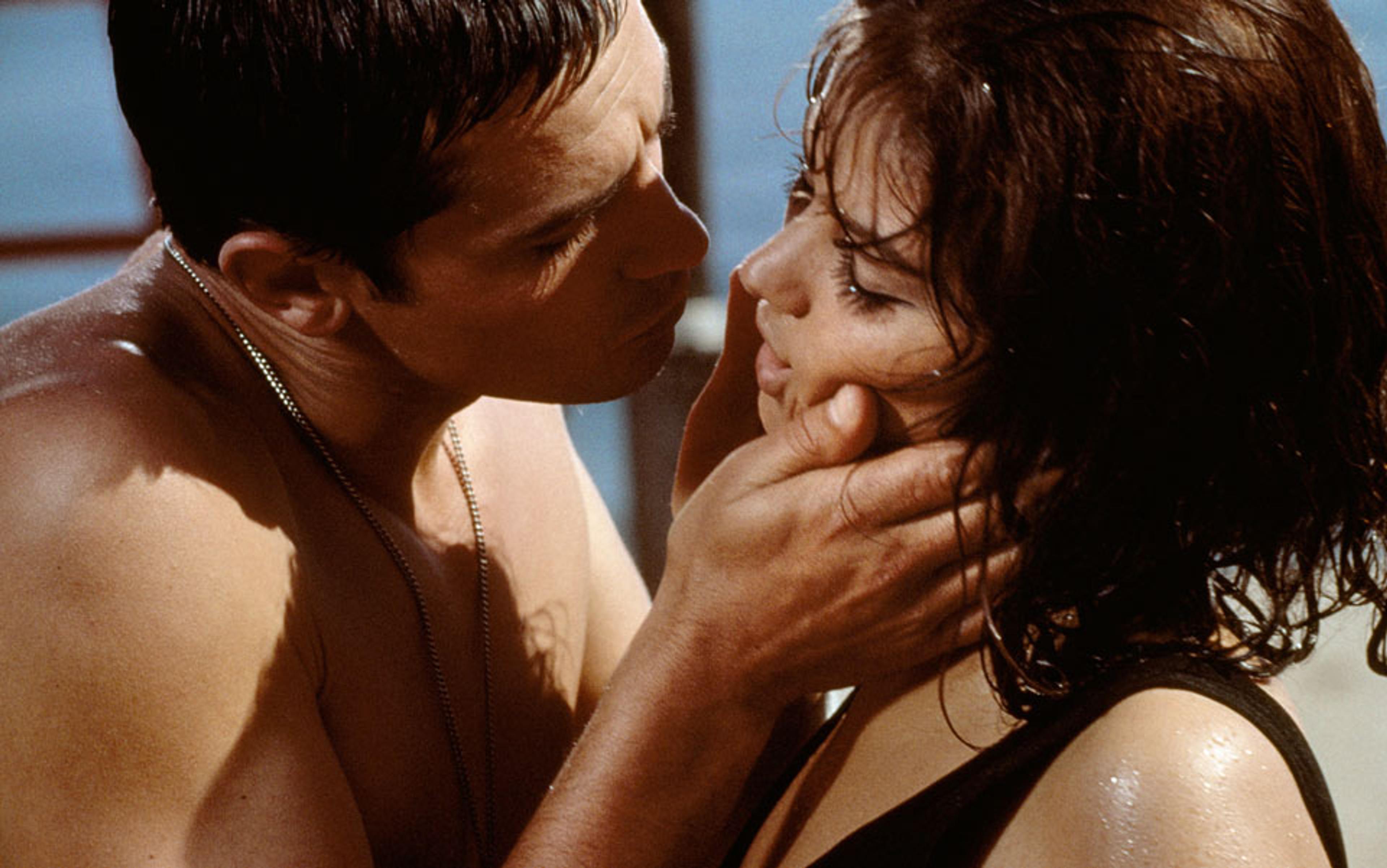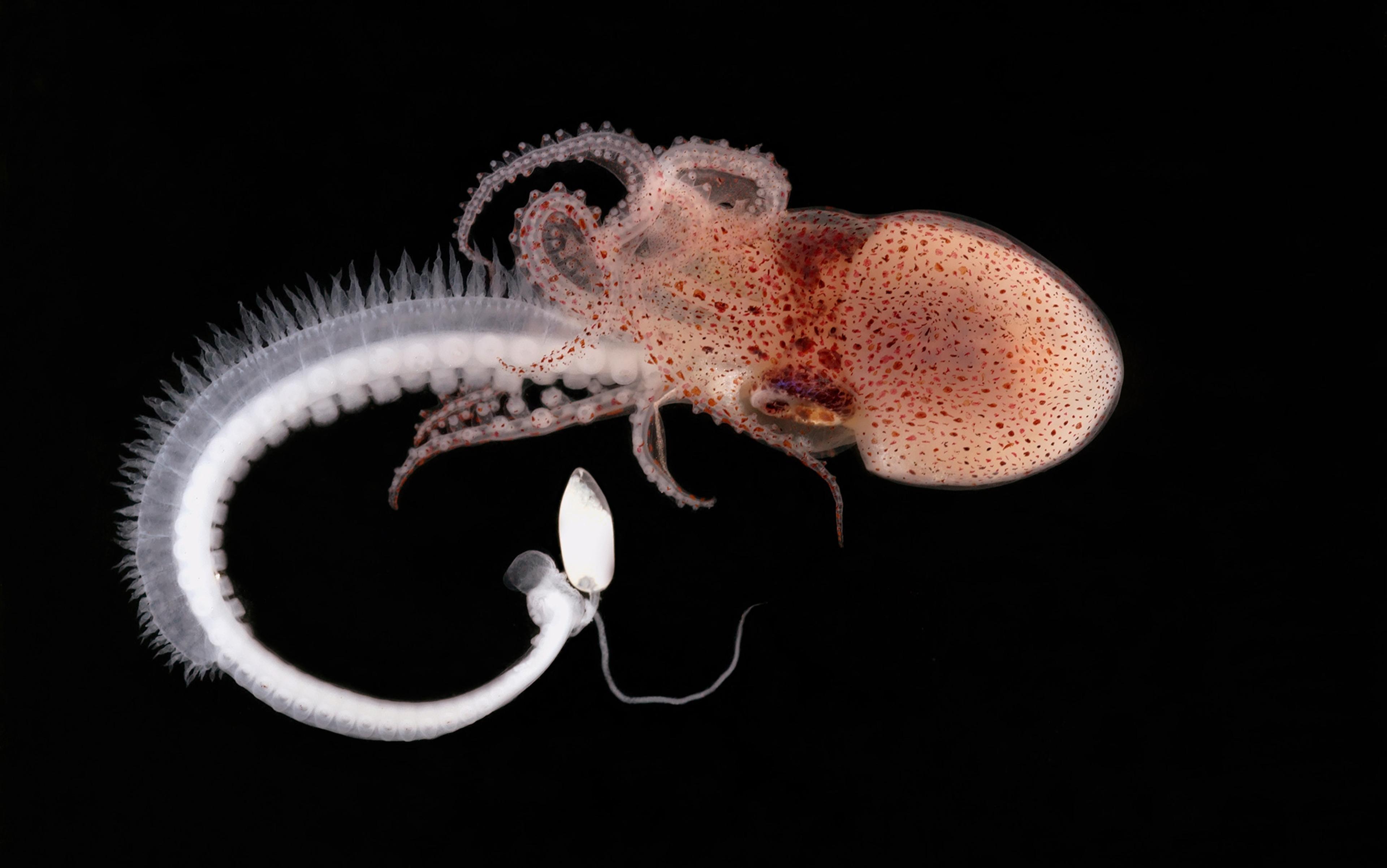For a large part of his life, Charles Darwin didn’t like peacocks. It wasn’t their loud vocalisations – a high-pitched, piercing combo of laughter and screaming. That he could deal with. What kept him up at night was the peacocks’ tails. As he wrote to a friend in 1860, the sight of those ornate feathers made him feel sick whenever he gazed at them. Why? Because he couldn’t explain them. The plumes of turquoise, blue and brown, trailing behind many times the bird’s body length or spread into a wide fan of flamboyancy, was an affront to his theory of evolution by natural selection, a process founded on efficiency and removal of extravagance.
Not only is such a train of feathers metabolically costly, it is also readily visible to any carnivore looking for an easy meal. With all the predation, pathogens and diseases that living things need to overcome, Darwin wondered, how could such self-destructive beauty evolve? Why would an animal go to such extremes to make life harder, and death more likely? He finally hit on a plausible answer in 1871. In the second part of his book The Descent of Man, he explained that there is more to life than mere survival. Animals need to have sex, too. And because females are often more heavily invested than males in egg production and parental care, they are more likely to take the lead in choosing mates, too. As Darwin wrote: ‘It’s not a struggle for existence, but a struggle between the males for the possession of the females.’
Female choice takes many forms. In some species, courting males fight each other, and the female’s decision is made for her. But in many others, males win mates by showing off through ornaments and display. Females choose those males with superior appearance or antics, and over many millennia the selected traits become amplified; nature is red in tooth and claw, but it is also no place for the ugly. In the oceans, male fish flirt using elongated dorsal fins. In the air, male butterflies glisten with iridescent tints of colour. Even ancient dinosaurs weren’t just fighters but flaunters, too. Take triceratops, an iconic dinosaur known for its three-horned face. Some studies suggest that this species’ large, bony frill, long regarded as a form of protection against predators, was actually a flashy come-hither sign to the opposite sex.
No males go to greater lengths of seduction than do the dinosaurs’ modern-day feathered descendants. As Darwin noted, birds are the most aesthetically elaborate of all animal groups: ‘They are ornamented by all sorts of combs, wattles, protuberances, horns, air-distended sacks, top-knots, naked shafts, plumes, and lengthened feathers gracefully springing from all parts of the body.’ And they don’t stop with physical display. Birds of paradise – a group of 42 species from deep within the rainforests of New Guinea – augment their gaudy plumage with carefully choreographed rituals of courtship. In Australia, bowerbirds construct gardens of locally collected objects, each categorised by colour, texture and shape. Songbirds sing for love.
If you want to understand male ornamentation, then, birds are the animals to study. And there is a lot left to understand, because Darwin merely scraped the surface. He never fully answered his own question about the value of sexual displays. When a peahen chooses a particular peacock with beautiful outspread feathers, what exactly is it that she is choosing? What is the peacock displaying?
Since the early 20th century, myriad theories have been proposed: perhaps the males are signalling their ability to find food, or their resistance to parasites, or their robust genes. All of these explanations make intuitive sense, allowing females to sort between healthy and sickly suitors, and all of them have backing from experimental studies. Each can be cherry-picked to fit a specific species or group of animals. But not one of the theories connects the dots between male ornaments and female preferences throughout all of nature.
In 2010, Geoff Hill, an evolutionary biologist at Auburn University in Alabama, was one of those who kept trying and failing to find the universal code underlying all male sexual display. For two decades he had been studying mate selection in house finches, and he felt himself hitting a dead end. Then he started reading a popular science book called Power, Sex, Suicide: Mitochondria and the Meaning of Life (2005) by Nick Lane, a biochemist from University College London.
The book opened Hill’s eyes to a cornerstone of complex life: mitochondria, the microscopic power-factories found within every cell. He learned about them in school, but he remembered being told that, from an evolutionary perspective, mitochondria were neutral, unimportant and uninteresting. They certainly weren’t considered worth considering when talking about sexual selection.
Now a very different set of ideas were taking root in Hill’s brain. Mitochondria might be not just relevant but central to the process of male ornamentation, and energy-production might be the long-sought unifying explanation behind female choice. At long last, Hill realised, his finches and Darwin’s peacock might make perfect sense.
Ever since the German anatomist Richard Altmann peered down his bench-top microscope and first observed mitochondria in 1886, they have been an enduring enigma. As Lane wrote, a common phrase at biochemistry conferences was: ‘Don’t worry, no one understands the mitochondriacs.’ Yet they are ubiquitous. In the cells of every fungus, plant and animal, they can be seen as tiny granules, sometimes numbering into the hundreds of thousands. Roughly 10 per cent of your body weight consists of the mitochondria that reside within your 30 trillion cells.
With a burst of insight, Altmann posited that mitochondria were tiny organisms living harmoniously inside the cells of others, providing them with some vital cellular functions. He regarded them as elementary particles of complex life. His views were quickly criticised and pushed aside, however. Some scientists even claimed that Altmann was seeing things, discrediting the existence of his subcellular cells completely. But, over the past 50 years, advances in biochemistry and DNA sequencing have shown that Altmann was pretty much spot-on.
According to current theory, two billion years ago mitochondria were free-living bacteria, swimming in the primordial seas of an evolutionary stagnant world. Since all life was single-celled and evolutionary change was slow, this period in Earth’s history has been nicknamed the ‘boring billion’. But amid this monotony, something exciting happened. Between 1.5 and two billion years ago, one bacterium became engulfed by an archaeon (another type of single-celled organism) and survived. Two cells became one, forming a nascent eukaryotic cell – the foundation of all complex life today. The two major branches on the tree of life came together and blossomed into a third.
Without this one-off event, life would still be trapped behind a bottleneck of bacterial living, restricted to solitary microbial existence or to relatively simple collectives such as biofilms. ‘Bacteria have been collaborating and competing among themselves for nearly four billion years, and yet only came up with the eukaryotic cell once,’ Lane wrote in 2005. ‘The acquisition of mitochondria was the pivotal moment in the history of life.’ Shortly after this merger, the host went on to evolve a nucleus, the control centre of the cell where the primary DNA is housed. Meanwhile, the mitochondria became specialised in one task, providing energy to their host cell through respiration (the molecular burning of food with oxygen). They are the combustion engines of life.
Sexiness is ultimately a matter of a potential mate’s functional energetics
Inside each mitochondrion, production lines of proteins are ceaselessly at work. All along their inner membranes, electrons extracted from food molecules get passed along four huge protein complexes (I, II, IV, and V) like an electrical current passing down a wire. This subatomic flux across protein stepping-stones is then converted into a molecular energy carrier known as ATP. This universal energy currency can leave the mitochondria and fuel the daily requirements of the cell. Without ATP, the cell would have no power supply.
‘You need ATP for absolutely everything,’ Lane tells me. ‘If you want to have cell growth, if you want to make more proteins, if you want to replicate your DNA, if you want to do anything at all, you better have enough ATP for it.’ Scaled up to the size of an entire organism, that ‘anything’ includes some of the most costly, non-utilitarian traits of all: male ornaments, along with displays of physical and cognitive fitness.
There’s no doubt that ATP and expensive male ornaments are linked. In a sense, that is a trivial insight, since ATP is linked to every aspect of an organism that consumes energy. But Hill started to suspect a deeper connection between sexual display and mitochondria. A vast biomedical literature shows that when mitochondria go awry, the most active cells start to die off first. Degenerating muscle cells in Parkinson’s and failing neurons in Alzheimer’s are both caused by faulty mitochondria, for instance.
Sexiness, Hill theorised, is ultimately a matter of a potential mate’s functional energetics. When females choose, what they are really choosing is mitochondrial health.
The new story of sexual display hinges on the way that mitochondria have evolved over time. After they found themselves cell-bound, these descendants of free-living bacteria started shedding most of their genes. Without their extra genetic baggage, they could replicate faster and become more specialised in ATP production. In modern animals, only 13 genes remain in the mitochondria. The rest – some 1,500 genes – have been shipped into the host cell’s nucleus, still encoding the same proteins essential to the production of energy but now doing their work off-site; those additional proteins then get transported into the mitochondria to finish the job. Of the 400 or so proteins in the stepping-stone process of ATP creation, the majority originate from the nucleus.
The energetic process that powers all of life depends on the close collaboration between two genomes, from the cell and from the mitochondria. And this co-dependency raises a few issues during sex. Mitochondria are passed on to offspring within the egg, from mother to daughter and son. In other words, they are maternally inherited; Dad doesn’t have a say in the matter. But the genes within the offspring’s nucleus are equal parts of each parent, a 50:50 split, so the father’s genes still have a big part to play in ATP production. ‘They had better match the genes in the mitochondria,’ says Lane. ‘They have to work together.’
Research into marine copepods that inhabit isolated tidal pools along the coast of Santa Cruz Island in California reveals what happens if the two sets of genes don’t get along. By breeding females from one population with males from another, Ronald Burton from the Scripps Institution of Oceanography has been forcing offspring to inherit mitochondria and nuclear genes that haven’t met in thousands of years. Although of the same species (Tigriopus californicus), their genes will have accumulated a few slight DNA mutations over the time they have been separated. What’s the result of this slight mismatch? An enormous drop in energy availability.
Burton found that ATP production falls by 40 per cent in the interbred copepods, reducing their growth rate, fertility and survival chances. Small differences in mitochondrial and nuclear genes, it seems, can have huge ramifications on an animal’s energy supply. And with less energy to go around, the bare necessities of life – growth, reproduction and survival – are stymied. For their offspring’s sake, females need to choose their partners with care. They need to find a good match for their mitochondria.
males are expending so much energy in courtship to prove that they are energetically well-endowed. It’s an honest signal: you either have it or you don’t
In 2013, Hill had an insight that this need for harmonious ATP genes could be a key mechanism that drives males to be showy. He called it the ‘mitonuclear coadaptation’ hypothesis. The premise is simple: the more efficient a male’s mitochondrial production lines are, the more elaborate (and attractive) he can afford to become. With his mitochondrial and nuclear genes working in synchrony, not only can he bear the vicissitudes of survival, but he can invest extra energy in ornamentation and display. It’s a matter of energy economics: the more you have, the more you can allocate in foraging, in resisting parasites, and even attracting a mate.
The requirement for deep molecular functioning ‘pulls everything together’ among the various theories of male sexual display, Hill says. Males that have mismatched genes simply can’t grow ornate ornaments, nor can they forage, sing or dance for as long. Further, even if males are highly energy-efficient, they still might not be eye-catching if they happen to be fettered by disease or parasitic infection. From a female’s perspective, the underlying cause of visual blandness is not important; the only thing that matters is the inner quality of a potential mate. ‘If you avoid those poorly ornamented males you avoid all problems. You avoid any kind of bad genes or inability to deal with environmental problems,’ Hill says. ‘You get rid of it all with one choice.’
The mitonuclear coadaptation hypothesis puts energy at the heart of sexual selection: males are expending so much energy in courtship in order to prove that they are energetically well-endowed. It’s an honest signal. You can’t cheat energy efficiency; you either have it or you don’t. By mating with the most impressive male, a female’s offspring will inherit 50 per cent of the father’s nuclear genes – genes with a proven track record behind them.
Still, the male-ornamentation signal has its limits. During sperm and egg production, nuclear genes are shuffled like a deck of cards, rearranging both male and female DNA. The same goes for mitochondria; the 13 genes are five times as likely to mutate as are the nuclear genes. With both sides of the collaboration changing with every generation, new combinations are perpetually being thrown together. Some work. Others don’t. With every new mating, the females are trying to sort through the mess.
‘It’s not that they are selecting good genes,’ says Hill. ‘They are avoiding those bad genes. They’re eliminating all the males with low respiratory function.’
At the moment, Hill’s theory remains just that: a theory, not yet tested out in the field. ‘One can say that there’s precious little evidence to support the idea, but there’s precious little evidence to disprove it either,’ says Andrew Pomiankowski from University College London, who studies sexual selection in insects. Despite that seemingly lukewarm endorsement, Pomiankowski considers Hill’s work an intriguing step forward: ‘The virtue in what he has done is that he’s brought attention to mitochondria as a possibility.’
And the evidence in support of mitonuclear coadaptation is steadily building. That evidence is looking especially intriguing in the case of biology’s greatest sexual exhibitionists: the birds.
Compared with many other animals, male birds have a larger input towards their offspring’s nuclear genes. The reason for this is rooted in what defines the two sexes. Unlike the case for mammals (including humans), in which the female has two of the same sex chromosomes (XX), in birds it is the male that is the so-called homozygotic sex. They have two Z chromosomes, whereas females have a Z and a W. Any female offspring can inherit only their Z chromosome from their father; he has nothing else to give. Further, unlike the Y chromosome in humans, the Z chromosome is the larger sex chromosome in birds, outnumbering the W in number of genes it contains. Daughters are therefore dependent on their father for a large chunk of their genetic make-up.
Here’s where things get really interesting. At least three genes on the Z chromosome in birds encode proteins that are crucial to ATP production within their mitochondria. ‘They’re involved in the core of respiration,’ says Lane, so a healthy male Z chromosome is hugely important for his offspring’s wellbeing. That factor should make female birds especially picky, which would explain why they seek out males with the most spectacular ornaments and displays – with spectacular evolutionary consequences. ‘Just as man can give beauty,’ Darwin wrote in 1871, ‘so it appears that female birds in a state of nature have, by a long selection of the more attractive males, added to their beauty or other attractive qualities.’
Let’s not take Darwin’s word for it, though. A 2003 study by Hudson Kern Reeve of Cornell University and David Pfennig of the University of North Carolina at Chapel Hill found that species with a ZW sex determination system (including butterflies, in addition to birds) are far more likely to be ornamented than those with other forms of sex determination. Hill readily acknowledges that a correlation between ZW sex determination and ornamentation doesn’t prove that the two are linked, ‘but it certainly fits the ideas I have.’
Female house finches prefer the most brilliant hues: the more red a male is, the better his chances of finding a nest mate
Hill has a lot of other support to draw on, too. Looking back to his favoured study species – house finches – he thinks that he might have found the most conclusive evidence for his theory to date.
Males of this small songbird develop bright speckles on their heads and breasts, coloured with carotenoid pigments obtained from their diet of seeds, berries and flowers. Within the bird’s feathers, the yellow carotenoids are modified in structure and shape, altering the wavelengths of light that they absorb and reflect. Yellow shifts toward red. Female house finches prefer the most brilliant hues, Hill found in a landmark study: the more red a male is, the better his chances of finding a nest mate.
Those reds, in turn, depend strongly on a male finch’s energy efficiency. At a basic level, energy is important for taking in a good, pigment-rich diet. More telling, the conversion of yellow carotenoids into red pigments shares some of the same molecular stepping-stones as ATP synthesis. Although widely disparate in function, the two biochemical processes overlap in form at the chemical level. ‘It all fits,’ says Hill. ‘Redness becomes this core indicator of mitochondrial function. If there’s any problem, it literally lights up in the males.’
In Hill’s new view, the red breast of a robust male house finch is just one subtle exemplar of the relationship between mitochondria in male ornamentation. The long train of the peacock and the colourful gardens of the bowerbird likewise function as eye-catching billboards advertising their owner’s energy efficiency. They are beautiful reminders of that marvellous moment two billion years ago when two cells became one.






